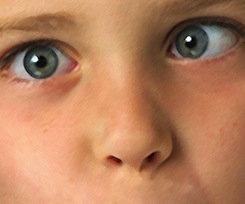Strabismus: When to operate?
Strabismus is an eye problem that can operate both in childhood and in adulthood. Strabismus is a deviation from the normal direction of one or both eyeballs, whereby both visual axes are not simultaneously directed to the same point. While it is true that this is an eye problem common in childhood, it may occur in adulthood. But as we shall see, age is not a problem to correct the defect of the eyes.
The question is, when do you operate? In principle, it can operate at any age, but must take into account a number of factors, such as the association of the strabismus with amblyopia or lazy eye. In the case of children lazy eye must be treated before opting for the operation through glasses, contact lenses, filters or patches. The earlier you detect the signs of lazy eye is easier to correct. From the eight years the difficulties to regain the vision are greater.
For adults, strabismus operates not only aims to correct this defect, but also the possibility of dispensing with glasses. The most common, first, is to practice refractive surgery and a few months later, a second intervention for strabismus. The reason for waiting a few months is because, in some cases, when performing refractive surgery deviation is corrected, so that the second operation would be unnecessary. It should be noted that although in most cases, adults have strabismus as children; its appearance may be delayed and related to other eye diseases such as myopia, or so common diseases such as diabetes or hypothyroidism.
Strabismus symptoms
Double vision, eye pressure, visual acuity loss, the inability to see in relief or eyestrain distances and are some of the most common symptoms in the case of adult strabismus, to which must be added the emotional problems that may pose difficulties in looking at other people, which may have a negative impact on the social aspect (problems of self-esteem, difficulty relating with others).
There are different types of strabismus, depending on the eye that wanders or age of onset. When appearing before the six months is considered that strabismus is congenital.
Tips after operation
The operation is to intervene on one or more of the oculomotor muscles, responsible for moving the eyeball. With surgery, strengthening or weakening these muscles, avoiding eye deviation. A technique that, in addition, in recent years has been improved to achieve better results. However, before considering surgery, it is very important to have an accurate diagnosis of the cause behind the strabismus, to apply the most appropriate treatment for each age.
After surgery to correct strabismus during the first few weeks you have to avoid going to the pool or beach, stay in contaminated areas (smoke, for example) or for contact sports.
